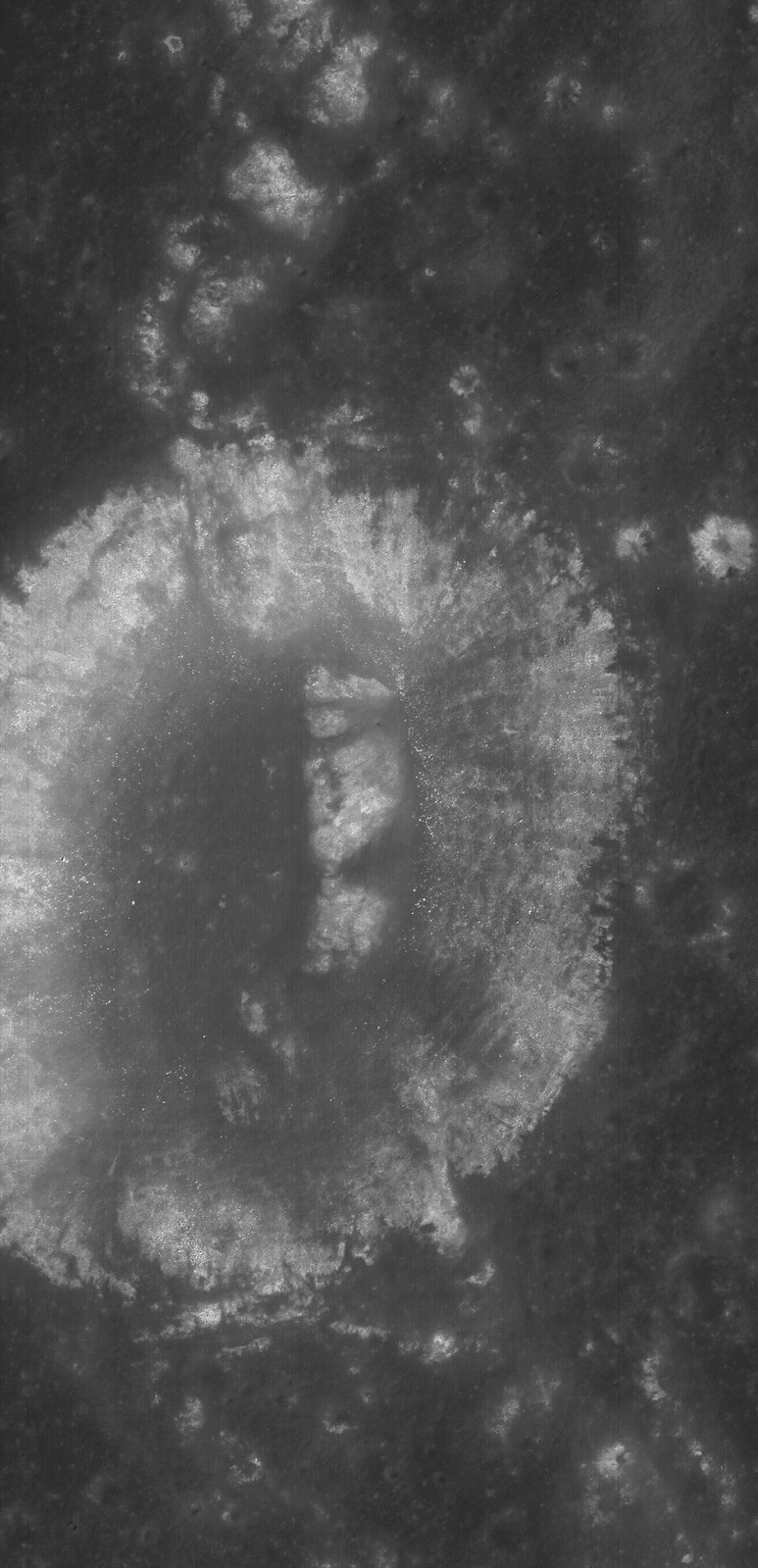 |
| It's time in the Sun finally came, last September. Marius K (3.61 km; 9.4°N, 309.3°E), south of its namesake, southeast of Reiner Gamma in Oceanus Procellarum, was among the few places on the lunar surface not previously imaged at high-resolution by LROC cameras. The closer look came at the end of the observational period in the latest, 20th release to the Planetary Data System, December 15, covering roughly mid-June through mid-September 2014. LROC NAC observation M1165144506R, LRO orbit 23602, September 12, 2014; 17.25° incidence angle, resolution 1.07 meters from 105 km over 9.93°N, 309.4°E [NASA/GSFC/Arizona State University].See a larger reproduction HERE. |
Teams operating sensors on-board the Lunar Reconnaissance Orbiter, including the Lunar Reconnaissance Orbiter Camera (LROC), are currently updating the Planetary Data System with another treasure trove of records covering the three months from mid-June through mid-September.
The will be the 20th such Release to the PDS of information gathered from the remarkable LRO which has been orbiting the Moon since June 2009.
Geosciences Node LRO page. The Lunar Orbital Data Explorer allows one reliable way of searching and downloading LRO data.
HERE.
The will be the 20th such Release to the PDS of information gathered from the remarkable LRO which has been orbiting the Moon since June 2009.
Geosciences Node LRO page. The Lunar Orbital Data Explorer allows one reliable way of searching and downloading LRO data.
 |
| Another image really requiring the viewer to select a full-size option to appreciate its detail. A roughly ten kilometer-wide view of the Reiner Gamma contact zone with the Marius Hills, in Oceanus Procellarum. From 20th release of LROC data released to the Planetary Data System (PDS), December 15, 2014. LROC NAC mosaic M1158112330LR, LRO orbit 22614, June 22, 2014; 67.62° incidence angle, resolution 1.07 meters from 105.12 km over 10.32°N, 304.48°E [NASA/GSFC/Arizona State University]. |



No comments:
Post a Comment